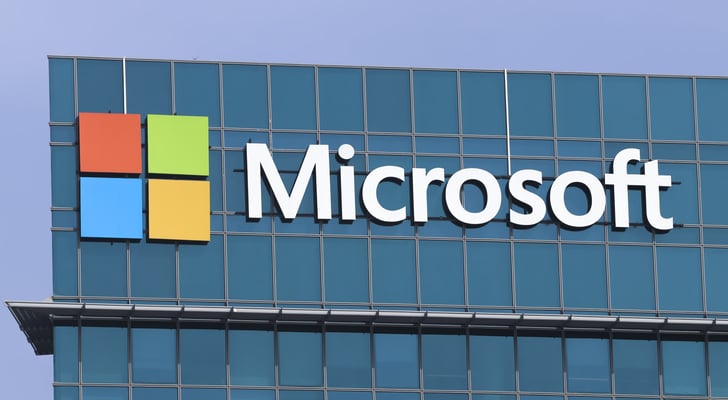Giving credit where it’s due, Microsoft Corporation (NASDAQ:MSFT) did well last quarter. Earnings of 73 cents per share were better than the expected 70 cents per share of Microsoft stock, and although revenue of $23.56 billion fell short of estimates, that top line was notably better than the $22.08 billion the company produced in the same quarter a year earlier. MSFT stock slumped on the news, but few could deny that relatively new CEO Satya Nadella’s vision for the iconic company is bearing fruit.

And yet, just when it looks like Nadella’s plan is coming together, a string of recent initiatives has forced Microsoft stock owners to ask if he’s been good for the company so far, or just lucky.
What’s the Goal for MSFT Stock Here?
Just a couple of days before its earnings news was released, MSFT unveiled what it’s calling a Cloudbook. The low-cost laptop will target the educational market, which is big, but not exactly a market than can afford high-end tech. The new line will compete with Google’s Chromebooks, threatening to take away a piece of a market mostly dominated by Alphabet Inc (NASDAQ:GOOG, NASDAQ:GOOGL).
Investors love the idea, of course — why not leverage an operating system it already owns to drive revenue from a new source?
In light of a couple of other initiatives the company has put into place though, it’s increasingly looking like Nadella is simply throwing spaghetti on the wall to see what sticks. If that is indeed the case, Microsoft may not be the deliberate juggernaut some investors have deemed it of late.
The most recent strand of spaghetti to get flung against the wall is the company’s new Surface Laptop. It’s a truly impressive machine. The price tag of $999 and up isn’t cheap, but the hardware performs well with the newest version of Windows 10 installed … “S.”
Windows 10 S is a trimmed-down version of Windows 10, with a focus on security and the use of apps found at the Windows Store. It’s fast too, in that it’s not bogged down by features users don’t care about. For those that need the full version of Windows 10 though, an upgrade is available. Presumably performance will be hampered, but that would be the case with any large OS.
To that end, Forbes contributor Brooke Crothers recently asked a great question of the new Surface Laptop: Why did Microsoft make it?
The answers he got weren’t exactly compelling. As Lisa Gade, Editor in Chief and CEO of MobileTechReview, put it:
“I thought Windows S and the Surface Laptop are an odd pairing. My guess is that Microsoft is doing a marketing message: ‘Windows S is so capable that even a nice high end laptop can be useful when running Windows S.’ Personally, I don’t think we’re there yet, though for some folks a mix of app store apps and web-based apps like MS Office and Google Docs may be all they need.”
IDC analyst Linn Huang noted “the price tag compared to the OS will be a paradox for many,” despite the option for an upgrade.
Other onlookers are a bit confused too, especially in that Microsoft’s home-grown hardware continues to turn its PC-making partners into competitors.
Roger Kay, President of Endpoint Technologies, commented:
“The new Surface bothers me because it [goes] after Microsoft’s partners’ business. Arguably, the original prodded partners to innovate. This one doesn’t have that excuse. It’s aimed directly at the sweet spot on the product spectrum, the place where OEMs can still make money. Meanwhile, Microsoft doesn’t really take care of end customers and still needs the OEMs to get to market. Better it makes reference designs and contributes them to the ecosystem.”
And that’s when it hits … is MSFT so interested in being all things to all people that it’s not going serve any of them very well?
Bottom Line for Microsoft Stock
Don’t read too much into the idea — MSFT stock is doing plenty well with the office productivity and cloud divisions. To the extent the ‘More Personal Computing’ division is going to drive revenue on its own though (ancillary or otherwise), one can’t help but wonder if Nadella is being overly aggressive with his leveraging of the operating system, perhaps putting too much of the company’s future in Windows 10’s and home-grown hardware hands.
Business Insider’s Matt Weinberger may have said it best last week, writing “Microsoft CEO Satya Nadella’s master plan for Windows is getting pushed to its limits.”
Let’s hope for the sake of Microsoft stock that Nadella knows where the limits of Windows 10 are, and where the company’s branded device limits are. Maximizing an asset is one thing. When a company pushing any asset to its limit though, it rarely ends up being pretty for the long haul.
As of this writing, James Brumley did not hold a position in any of the aforementioned securities.
